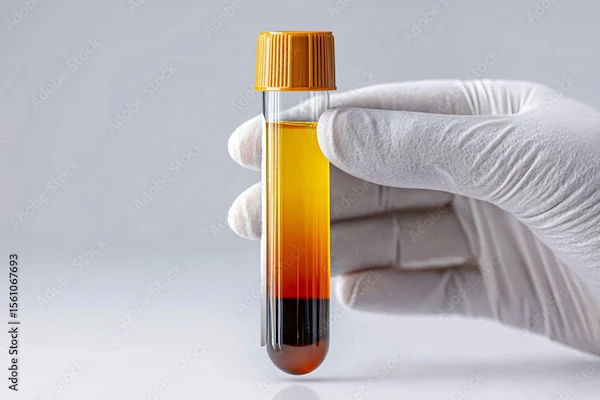Guide to Effects Of Air Pollution On Lungs
Know about the air pollution, what is aqi, what it is composed of, long term and short term effects, who is at rosk, smart indor lifestyle modifications, who is at risk, how to check AQI and nore.

Written by Dr. J T Hema Pratima
Reviewed by Dr. Dhankecha Mayank Dineshbhai MBBS
Last updated on 21st Oct, 2025

Introduction
If you’ve ever felt a scratchy throat on a smoggy day or struggled through a run when the air looked hazy, you’ve already experienced the effects of air pollution on your lungs. Air doesn’t just carry oxygen—it can also carry a mix of irritants and invisible particles that sneak deep into our airways. Over time, that exposure can trigger symptoms, worsen asthma and COPD, slow children’s lung development, and even increase the risk of lung cancer. The good news? You can lower your risk with a few practical, science-backed steps. In this guide, we unpack what “air pollution” really means, how it affects the lungs in the short and long term, who is most at risk, and the everyday choices that can meaningfully reduce exposure. You’ll learn how to read the Air Quality Index (AQI), when to wear an N95, how to set up a DIY clean-air room, and when to see a doctor.
Why Air Pollution Hits the Lungs Hard
Our lungs are built for efficiency: you take about 20,000 breaths a day, moving air through branching airways into millions of tiny sacs called alveoli—where oxygen crosses into your blood. That efficiency is also the vulnerability. Very small particles (PM2.5) and gases can ride your breath past your nose and throat defenses straight to the alveoli. There, they can irritate the lining, spark inflammation, and even pass into the bloodstream.
Inflammation is the body’s alarm system: when irritants arrive, immune cells flood in to neutralize perceived threats. Short bursts of this response help you recover. But repeated exposure like daily commutes along busy roads or cooking without ventilation—keeps that alarm switched on. Over time, chronic airway inflammation can thicken the airway walls, increase mucus, and make breathing feel harder. In people with asthma, it can heighten airway sensitivity, triggering wheeze and chest tightness on high-pollution days. In COPD, it can worsen cough, sputum, and flare-ups.
Consult Top General Practitioner for Personalised Advice
What “Air Pollution” Actually Includes
Air pollution covers a mix of particles and gases. Among the most important for lung health:
1.PM2.5 and PM10: Particulate matter smaller than 2.5 microns (PM2.5) penetrates deep into the lungs; PM10 is coarser and can irritate upper airways. PM often comes from vehicle exhaust, industry, dust, and smoke.
2. Ozone (O3): Ground-level ozone forms when sunlight reacts with emissions from vehicles and industry. It’s a powerful airway irritant, especially on hot, sunny days.
3. Nitrogen dioxide (NO2): Produced by traffic and gas stoves. Elevated indoor NO2 is common in kitchens without proper ventilation.
4 .Sulfur dioxide (SO2) and carbon monoxide (CO): Emitted by combustion processes; both can affect respiratory and cardiovascular health.
5. Volatile organic compounds (VOCs): Released from solvents, paints, cleaning sprays, and some air fresheners; can irritate airways and contribute to smog.
Indoor vs outdoor sources matter. Outdoors, traffic corridors and industrial zones raise PM and NO2; during heat waves, ozone skyrockets. Indoors, biomass stoves, incense, candles, frying at high heat, and poor ventilation elevate PM and VOCs. Gas stoves can increase NO2, particularly in small, unventilated kitchens. Wildfire smoke can infiltrate homes for days, pushing indoor PM2.5 to dangerous levels even with windows closed if filtration is inadequate. Understanding the mix where you live, work, and cook helps you target the right fixes (ventilation, filtration, behavior changes).
Short-Term Effects You May Feel Today
Short-term exposure to polluted air can cause immediate symptoms: coughing, wheezing, sore throat, irritated eyes, chest tightness, and shortness of breath. Even healthy adults often report “airway burn” or reduced exercise performance on bad ozone or PM days because irritants inflame airway linings and make breathing less efficient. Studies consistently find that emergency department visits for asthma and bronchitis rise on days with higher PM2.5 or ozone.
People with asthma or COPD are especially vulnerable. Pollution can trigger asthma exacerbations, requiring more frequent use of reliever inhalers or even oral steroids; COPD flare-ups are associated with spikes in hospitalizations and worse recovery. Children may cough more, wake at night, or show reduced peak flow readings. During wildfire smoke episodes, the CDC advises minimizing outdoor activity, moving to indoor spaces with clean, filtered air, and wearing a properly fitted N95 respirator if you must be outside for extended periods. [5][6]
Long-Term Damage You Don’t Want to Ignore
Long-term exposure to air pollution can cause structural and functional lung changes. In children, the USC Children’s Health Study showed that growing up with higher pollution is linked to slower lung growth; encouragingly, as air quality improved, subsequent cohorts showed better lung development and higher FEV1 by late adolescence. For adults, chronic exposure to PM2.5 has been associated with accelerated lung function decline and increased risk of chronic bronchitis and COPD even among nonsmokers.
Importantly, the International Agency for Research on Cancer (IARC) classifies outdoor air pollution and particulate matter as carcinogenic to humans (Group 1), with lung cancer the most firmly established outcome. [10] WHO and The Lancet also link air pollution to millions of premature deaths, largely due to heart and lung disease. Studies indicate that risk rises even at PM2.5 levels below some current standards, suggesting there is no clear safe threshold for long-term exposure.
Scarring (fibrosis) can occur with certain occupational or severe exposures, and repeated airway injury may leave lasting sensitivity. The bottom line: reducing cumulative exposure over years through cleaner transport, better home ventilation, and filtration pays dividends in preserved lung function and lower disease risk.
Who’s Most at Risk—and Why
Some people are more susceptible to the effects of air pollution on the lungs:
1. Children: Their lungs are still developing, they breathe more air per body weight, and they often spend time outdoors. Long-term exposure can reduce peak lung function attained in late teens.
2. Older adults: Age-related changes and coexisting heart or lung disease increase vulnerability. PM2.5 exposure correlates with higher hospitalizations for respiratory issues. [1][4]
3. Pregnant individuals: Air pollution exposure is associated with adverse pregnancy outcomes and may affect the developing fetus and the child’s later lung health. [1]
4. People with asthma, COPD, or cardiovascular disease: Airway hyperreactivity and reduced reserve make flare-ups more likely on high-pollution days. [4][5]
5 . Workers with exposure: Construction, traffic police, industrial workers, and kitchen staff can encounter higher daily concentrations, especially without adequate respiratory protection and ventilation.
Wildfire Smoke, Smoggy Cities, and Your Daily Routines
Wildfires generate intense PM2.5 that can travel hundreds of kilometers, turning skies orange and pushing AQI into hazardous ranges. During such episodes, PM can leak indoors through tiny cracks; the CDC recommends closing windows, running HEPA purifiers, sealing gaps, and wearing N95s outside. Car cabin air set to recirculate with a quality cabin filter can reduce exposure during necessary travel.
Smoggy urban days may be driven by ozone or PM. Ozone peaks in the afternoon on sunny days, so plan outdoor activities for morning or evening. PM peaks can relate to traffic rush hours, dust storms, or winter inversions. Apps and local air sensors can show pollutant-specific trends; if PM is high but ozone is moderate, masking outdoors helps more than shifting time.
How to Check the AQI—and What to Do About It
The Air Quality Index translates pollutant concentrations into color-coded categories. Most apps report a composite AQI based on the worst pollutant at that time. For lung protection, it’s helpful to know which pollutant is driving the AQI:
1. PM2.5 dominant: Focus on filtration (HEPA purifiers, clean-air rooms) and wearing an N95 if outdoors for long periods.
2. Ozone dominant: Time outdoor activity to mornings or evenings; masks do not filter ozone.
3. NO2/other gases: Ventilation and avoiding high-traffic corridors help.
Actionable thresholds:
1. AQI 51–100 (Moderate): Sensitive groups should watch symptoms, keep relievers handy, and consider lighter activity outdoors.
2. AQI 101–150 (Unhealthy for Sensitive Groups): Shift exercise indoors or reduce intensity; run HEPA purifiers; use vented hoods for cooking.
3. AQI 151–200+ (Unhealthy/Hazardous): Stay indoors with filtration; create a clean-air room; wear a well-fitted N95 if you must go outside. [2][3][5]
When to Seek Care and What Tests Help?
The signs which indicate care include:
Red flags
Seek medical help if you experience persistent shortness of breath, chest tightness not relieved by rescue inhaler, frequent night awakenings, blue lips/fingertips, confusion, or if cough with sputum or fever persists beyond a few days—especially after a smoke episode. If symptoms persist beyond two weeks, consult a doctor online with Apollo24|7 for further evaluation.
Useful tests:
1. Spirometry: Measures lung function (FEV1/FVC) to assess asthma/COPD or pollution-related decline.
2. Peak flow: Home monitoring helps track variability tied to AQI.
3. Pulse oximetry: Checks oxygen saturation during flare-ups.
4. Imaging: Chest X-ray or CT in select cases.
5. Allergy or nitric oxide tests: Sometimes used in asthma phenotyping.
Management:
• For asthma/COPD, ensure an updated action plan, adherence to preventer inhalers, and correct inhaler technique.
• During high-pollution periods, clinicians may advise step-up therapy.
• Vaccinations (influenza, pneumococcal if indicated) reduce risks of complications.
Smart Home and Lifestyle Changes That Reduce Exposure
1. Cooking smarter: Use a range hood that vents outdoors; run it on high when frying, and let it run a few minutes after. Cook on back burners (closer to hood capture), choose lower-smoke-point oils for high heat, and consider air-frying or baking instead of deep-frying. If you have a gas stove, open a window and run the hood; consider an induction cooktop for a long-term solution.
2. DIY clean-air room: Pick a small bedroom, close windows/doors during smoke events, and run a properly sized HEPA purifier continuously. Add a door sweep and seal gaps. A box fan with a MERV 13 filter is a low-cost backup.
3 . Cleaning and fragrances: Avoid aerosol sprays and strong fragranced products on bad-air days; choose fragrance-free cleaners to reduce VOCs. Damp dusting minimizes resuspension of particles.
4. Plants and myths: Houseplants are great decor but do not meaningfully clean room air compared to HEPA filtration and ventilation. Focus efforts on filtration, source control, and timing.
5. Active life, smart timing: You don’t have to stop moving—just shift workouts to lower-pollution times or indoors with filtration. Hydration and nasal saline rinses can relieve irritation after exposure.
Conclusion
Air is essential, but it isn’t always clean—and your lungs feel the difference. From irritated throats on smoggy days to the slower, quieter impacts on lung growth and long-term disease risk, the effects of air pollution on the lungs are real and well-studied. The empowering news is that you can meaningfully lower your risk by focusing on your daily “microenvironments”: ventilate and filter your home, especially the kitchen; choose cleaner routes and smarter times for outdoor activity; and use HEPA purifiers and N95 masks when PM is high. Pair these actions with a simple routine—check AQI, plan your day, and keep rescue medications and an action plan ready if you live with asthma or COPD.
Community choices matter too. Support clean air policies at school, work, and in your city; they’ve already delivered measurable gains in children’s lung function and fewer hospitalizations. If you notice persistent symptoms—wheezing, chest tightness, or breathlessness—especially on polluted days, don’t ignore them. If your condition does not improve after trying these methods, book a physical visit to a doctor with Apollo24|7. Tests like spirometry or peak flow monitoring can clarify your lung health and guide a personalized plan. With informed steps and community action, you can breathe easier today and protect your lungs for the long run.
Consult Top General Practitioner for Personalised Advice
Consult Top General Practitioner for Personalised Advice

Dr. Mainak Baksi
General Practitioner
13 Years • MBBS , MD (MPH)
Howrah
Mainak Baksi Clinic, Howrah
(50+ Patients)

Dr Suseela
General Physician
5 Years • MBBS
Bengaluru
Apollo Medical Center, Marathahalli, Bengaluru

Dr. Rajib Ghose
General Physician/ Internal Medicine Specialist
25 Years • MBBS
East Midnapore
VIVEKANANDA SEBA SADAN, East Midnapore

Dr. Tapabrata Ray
General Physician/ Internal Medicine Specialist
4 Years • MBBS,DGM,CPMeC,ACMDC
Kolkata
MCR SUPER SPECIALITY POLY CLINIC & PATHOLOGY, Kolkata

Dr. Abhirup Chakrabarti
General Practitioner
10 Years • MBBS
Chennai
Dr Abhirup Chakrabarti, Chennai
Consult Top General Practitioner for Personalised Advice

Dr. Mainak Baksi
General Practitioner
13 Years • MBBS , MD (MPH)
Howrah
Mainak Baksi Clinic, Howrah
(50+ Patients)

Dr Suseela
General Physician
5 Years • MBBS
Bengaluru
Apollo Medical Center, Marathahalli, Bengaluru

Dr. Rajib Ghose
General Physician/ Internal Medicine Specialist
25 Years • MBBS
East Midnapore
VIVEKANANDA SEBA SADAN, East Midnapore

Dr. Tapabrata Ray
General Physician/ Internal Medicine Specialist
4 Years • MBBS,DGM,CPMeC,ACMDC
Kolkata
MCR SUPER SPECIALITY POLY CLINIC & PATHOLOGY, Kolkata

Dr. Abhirup Chakrabarti
General Practitioner
10 Years • MBBS
Chennai
Dr Abhirup Chakrabarti, Chennai
More articles from General Medical Consultation
Frequently Asked Questions
1) How does PM2.5 harm the lungs?
PM2.5 particles are small enough to reach the alveoli, causing inflammation that can trigger symptoms now and contribute to COPD and lung cancer risk over time. (Long-tail: PM2.5 health effects)
2) Is it safe to exercise when the AQI is moderate?
Usually yes, but if you’re sensitive (asthma, COPD), reduce intensity and watch symptoms. If ozone is moderate, morning exercise is better; if PM is moderate, consider an indoor workout with a HEPA filter. (Long-tail: AQI tips)
3) Do plants clean indoor air?
not at a meaningful scale. For real impact, use a HEPA air purifier, ventilate well, and reduce sources like high-heat frying and aerosols. (Long-tail: air purifiers with HEPA filter)
4) Which mask helps with pollution?
A well-fitted N95 helps with particles like wildfire smoke or dust, but it doesn’t filter gases like ozone. For ozone, plan your activities to avoid peak times. (Long-tail: N95 mask for smoke)
5) When should I see a doctor about pollution-related symptoms?
If coughing, wheezing, or breathlessness persist beyond two weeks, or if you have frequent flare-ups on high-pollution days, consult a doctor online with Apollo24|7 for further evaluation. Tests like spirometry can help. (Long-tail: spirometry test for lung function)




